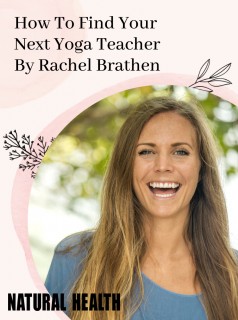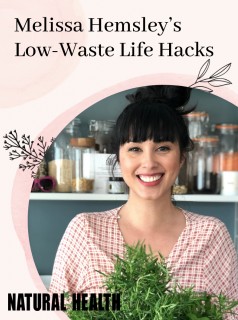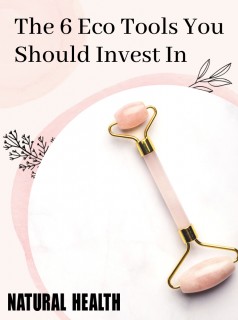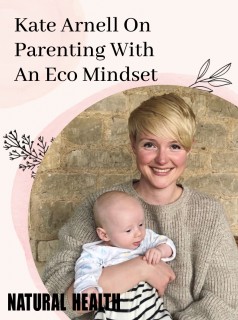Can you use the energetic flow of yoga to boost your body’s fertility? Absolutely, says Natural Health yoga expert Sue Fuller
Can you use the energetic flow of yoga to boost your body’s fertility? Absolutely, says Natural Health yoga expert Sue FullerYoga postures that stimulate the pelvic region of the body and increase the blood flow to this area are particularly useful. By increasing blood flow to the pelvic area the reproductive organs receive increased levels of oxygen and nutrients and this enhances the health and functions of these organs. It will also regulate the menstrual cycle and relieve any related symptoms experienced monthly by some women. In addition yoga has an extremely positive effect on the endocrine system and will therefore help to balance and regulate hormone secretions.
To enhance a successful conception it is important that both partners work to reduce stress and tension, eat a healthy well balanced diet, get plenty of rest, develop a positive attitude and are experiencing good health. Yoga will help them to achieve all of this and by practising yoga together it will help to deepen a couple’s bond and enhance intimacy. Another great thing about practising yoga with a partner is that both experience a similar state after a yoga session. This will help to balance the relationship and create a space and time for deep connection. In today’s busy world couples can often work long and varied hours so a yoga practice together willencourage them to spend some quality time with each other.
The following postures will increase blood flow to the pelvis and the reproductive organs. When using yoga to enhance fertility it is advisable to always move through the postures slowly and mindfully. Hold each posture and focus on a feeling of warmth whilst visualising a golden light in and around the pelvis.
Viparita Karani (Legs up the wall)
Begin sitting with your right hip as close to a wall as possible. Position your legs straight out in front of you with your right leg along the bottom of the wall. Then slowly lean your body to the left and lift your legs up from the floor. Continue the movement by rolling onto your back and extending your legs straight up the wall so that you create a right angle between your body onthe floor and your legs on the wall Remain here for 10 minutes breathing slowly in and out through your nose.
Sethu Bandasana (Half Bridge)
Begin by lying on your back with your knees bent. Make sure that the outside edges of your feet are parallel and that your weight is distributed evenly through the soles of your feet. Breathe slowly in and out through your nose. Inhale, then as you exhale push your lower back down into the floor, draw up your stomach muscles and slowly begin to lift your hips up. Continue to lift the hips until only yourshoulders, head and feet are in contact with the floor. Hold this posture, breathing slowly for 20 complete breaths.
Apanasana (Wind Release)
After performing the half bridge, remain on your back and draw your knees in towards your chest. Hold on to your knees or shins. Inhale and allow your knees to drift away from you 6 – 8 cm and as you exhale draw your knees in towards your chest. Continue like this for 20 complete breaths breathing slowly in and out through your nose.
Paschimotanasana (Seated Forward Bend)
Sit with your legs extended straight in front of you with a straight spine and point your toes up towards the ceiling. Breathe slowly in and out through your nose and in your own time fold your torso forwards towards your legs. Remain here for 20 complete breaths.
Baddha Konasana (Bound Angle Pose)
Sit with a straight spine, join the soles of your feet and place them close to your body. Breathe in and allow your knees to lift 6-8 cm, as you exhale release your knees down towards the floor. Continue with this technique for 30 complete breaths breathing slowly in and out through the nose.
Supta Baddha Konasana (Lying Bound Angle Pose)
Lay on your back with the soles of your feet together and your knees out to the side. Extend your arms above your head, keeping them in contact with the floor. Breathe slowly in and out through your nose for up to 10 minutes. Work to release tension each time you exhale.
Pelvic Floor Exercise and Pranayama (Breathing Exercise)
Sit comfortably with the ankles crossed and a straight back. Breathe slowly in and out through your nose. Draw up your lower stomach muscles. As you inhale, lift your pelvic floor muscles and as you exhale release the pelvic floor muscles. Continue with this technique for 20 breaths. It is important to perform pelvic floor exercises daily.
Carry on breathing slowly in and out through your nose. Begin now to picture your exhalation travelling down your body and leaving via the perineum. Visualise the out breath passing the reproductive organs and delivering warmth and golden light to them. Continue for up to five minutes and then return to breathing slowly.
Think on
It is important to note that if there is a medical reason why a couple are struggling to conceive it is always best to seek medical advice. Recent research undertaken at Harvard Medical School has revealed that stress is an important factor in infertility. The study carried out by Harvard researcher Alice Domar PhD showed that 55 per cent of infertility patients who participated in her 10-week mind body program which included yoga and meditation then successfully conceived.
A relaxation exercise to try
Lie on your back, breathing slowly in and out through your nose. Place your hands between your navel and your sternum. Become aware of this area moving as you breathe. Then place your hands on to your lower abdomen. Become very aware of the area under your hands. The lower abdomen does not move as you breathe. Your hands are positioned here to allow you to focus on this area and send positive energy to the organs in preparation for conception. Become aware of the heat from your hands warming the area. Continue for as long as necessary and finish by just breathing slowly in and out through your nose, releasing tension with each out breath.
Article by
Sue Fuller
Yoga Teacher
Sue Fuller is a leading yoga teacher, writer and co-founder of wellbeingworldonline.com A leading yoga teacher for over 15 years, Sue trained with the Sivananda organisation in Neyyar Dam, India...
Discover more
Article by
Sue Fuller
Yoga Teacher
Sue Fuller is a leading yoga teacher, writer and co-founder of wellbeingworldonline.com A leading yoga teacher for over 15 years, Sue trained with the Sivananda organisation in Neyyar Dam, India...
Discover more























